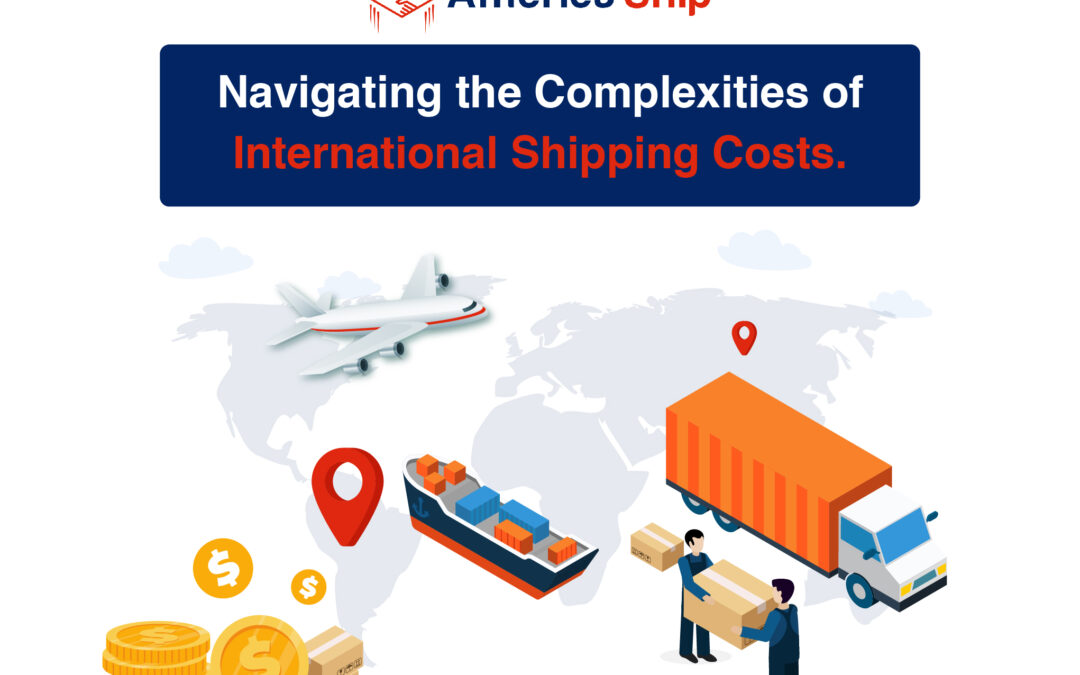Overview of International Shipping Rates
The global shipping industry plays a crucial role in international trade, with an estimated 90% of the world’s goods being transported by sea (International Chamber of Shipping). Shipping costs are influenced by various factors, including fuel prices, labor costs, tariffs, and insurance. For instance, fuel prices alone account for up to 60% of total shipping costs (World Bank). As of 2023, the cost of shipping a 40-foot container from the U.S. to China can range from $1,200 to $3,000, while shipping the same container from the U.S. to Mexico generally costs between $700 and $1,500 (Freightos). At Americaship, understanding these variables is crucial for optimizing logistics. Key elements like fuel prices and labor costs, the impact of tariffs and insurance, and the comparative rates of shipping between the U.S., Mexico, and China reveal the complex dynamics shaping the shipping industry.
How Fuel Prices and Labor Costs Impact International Shipping Rates
Fuel prices and labor costs are two major components that significantly impact shipping costs. Fuel prices, in particular, have a direct correlation with the cost of shipping goods. When fuel prices rise, shipping companies incur higher operating expenses, which are often passed on to customers. According to the World Bank, fuel costs can account for up to 60% of total shipping expenses, making it a critical factor in determining shipping rates (“Understanding the Impact of High Fuel Prices on Shipping Costs”). For instance, during periods of high oil prices, shipping rates tend to increase correspondingly, affecting the overall cost of trade. Labor costs also play a pivotal role, as wages for dockworkers, truck drivers, and other logistics personnel add to the total cost of shipping. In regions where labor costs are higher, such as in the United States, shipping companies may face increased operational costs, which again are often transferred to the consumer.
Role of Tariffs and Insurance
Tariffs and insurance are additional factors that influence shipping expenses. Tariffs are government-imposed duties on imported and exported goods, and they can vary significantly depending on the country and type of goods being shipped. For example, the tariffs imposed by the U.S. on Chinese imports have affected the cost of shipping goods between these two countries. According to a report by the Peterson Institute for International Economics, the average U.S. tariff on Chinese goods increased from 3.1% in 2018 to 19.3% in 2019, significantly impacting shipping costs (Bown). Insurance costs, on the other hand, are essential for mitigating the risks associated with shipping. Shipping insurance protects against potential losses due to damage, theft, or other unforeseen events. The cost of insurance can vary based on factors such as the value of the cargo, the route, and the shipping method. Higher insurance premiums add to the overall cost of shipping, making it a crucial consideration for businesses engaged in international trade.
Comparison of Shipping Rates Between the U.S., Mexico, and China
Comparing current shipping rates between the U.S., Mexico, and China highlights the diverse range of costs associated with international shipping. Shipping a 40-foot container from the U.S. to China typically ranges from $1,200 to $3,000, depending on factors such as the shipping method, route, and service provider (Freightos). The U.S.-China route is one of the busiest in the world, and rates can fluctuate based on seasonal demand and geopolitical developments. In contrast, shipping the same container from the U.S. to Mexico generally costs between $700 and $1,500, reflecting the shorter distance and different logistical challenges involved (Freightos). The relatively lower cost is also influenced by trade agreements like the United States-Mexico-Canada Agreement (USMCA), which aims to reduce trade barriers and facilitate smoother cross-border transactions. Additionally, shipping rates from China to the U.S. or Mexico may vary based on the direction of trade flows, with backhaul rates often being lower due to imbalances in trade volumes.
Conclusion
Understanding the factors that influence shipping costs is essential for businesses engaged in international trade. Key elements such as fuel prices and labor costs, the impact of tariffs and insurance, and the comparative rates of shipping between the U.S., Mexico, and China reveal the complex dynamics shaping the shipping industry. Americaship, with its expertise in international logistics, plays a crucial role in helping businesses navigate these challenges. By providing tailored shipping solutions and optimizing logistics, Americaship helps clients manage their shipping expenses effectively and maintain a competitive edge in the global market. Staying informed about these variables allows businesses to make strategic decisions that enhance their operational efficiency and profitability.
References
1. Bown, Chad P. “US-China Trade War: The Guns of August” Peterson Institute for International Economics.
2. Freightos. “Freight Rate Index.” 2023.
3. International Chamber of Shipping. “Shipping and World Trade: Overview.”
4. World Bank. “Understanding the Impact of High Fuel Prices on Shipping Costs.” World Bank, 2023
How to get started ?
All you need to do is create an account on our platform. Simply click here (https://america-ship.com/sign-up) and fill out the form to get started. If you need assistance or have any questions, feel free to reach out to us at customer.service@america-ship.com or give us a call at (956) 410-1188. We’re here to make your shipping process as smooth as possible.

